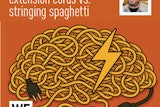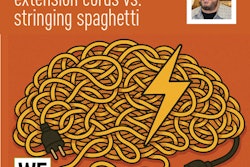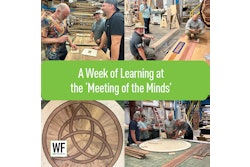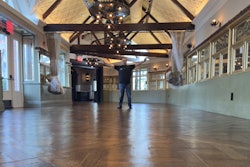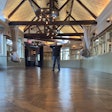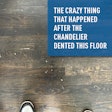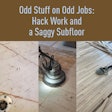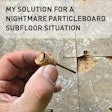The official topic of this blog will be an excruciating discussion of the term "cupping" for your consideration. But first…
My apologies for taking so long to get another submission ready, but for me writing is very hard work and extremely time consuming, and I marvel at those gifted individuals who can churn out wonderful written content on a regular schedule. I must admit that I'm not certain that I would be able to increase my output even if I were offered bushel baskets of legal tender to do it on a full-time basis. Time is finite and moves at an increasingly rapid pace. I remember watching the classroom clock as a youngster on Friday afternoons thinking that 4 o'clock would never arrive, and now Friday afternoons pass by faster than the pickets on a fence. But I digress…
If I were going to give an official definition for cupping it would be, "boards that are concave on the face." There is a common misconception in the wood flooring bidness that all cupping is moisture-related and that pressure that develops due to swelling is the primary cause. Let's explore some thought experiments.
Experiment 1: We place 10 S4S red oak boards ¾" x 4" x 72" edge-to-edge, which approximates a panel ¾" x 40" x 72". Then we place pipe clamps at 3" intervals across the 40" dimension and tighten the clamps until a pressure of 200 pounds per square inch is reached. What do you think is going to happen to the shape of the individual boards?
Experiment 2: We place 10 pieces of red oak flooring ¾" x 4" x 72" edge-to-edge, which approximates a panel ¾" x 40" x 72". Then we place pipe clamps at 3" intervals across the 40" dimension and tighten the clamps until a pressure of 200 pounds per square inch is reached. What do you think is going to happen to the shape of the individual boards?
Experiment 3: We nail 10 pieces of red oak flooring ¾" x 4" x 72" at a MC of 6-8% to a ¾"-thick plywood panel 48" x 72" at a MC of 6-8%. Then we place 1½" deck screws at 3" intervals into the first and the last boards so that they will be prevented from moving. We predrill the oak so that there will be no splitting. Then we place a bath towel on the face of the boards and saturate it with enough water to completely wet the towel but not have water puddling onto the surface of the flooring. Then we put a piece of 6-mil polyethylene over the towel to keep the water from evaporating. What do you think is going to happen to the shape of the individual boards?
Experiment 4: We nail 10 pieces of red oak flooring ¾" x 4" x 72" at a MC of 6-8% to a ¾"-thick plywood panel 48" x 72" at a MC of 14%-16%. Then we place 1½" deck screws at 3" intervals into the first and the last boards so that they will be prevented from moving. We predrill the oak so that there will be no splitting. Then we put a piece of 6-mil polyethylene covering the underside of the plywood to keep the water from evaporating. What do you think is going to happen to the shape of the individual boards?
Experiment 5: We nail 10 pieces of red oak flooring ¾" x 4" x 72" at a MC of 14-16% to a ¾"-thick plywood panel 48" x 72" at a MC of 6-8%. Then we place 1½" deck screws at 3" intervals into the first and the last boards so that they will be prevented from moving. We predrill the oak so that there will be no splitting. Then we put a piece of 6-mil polyethylene covering the underside of the plywood to keep the water from evaporating. What do you think is going to happen to the shape of the individual boards?
Experiment 6: We nail 10 pieces of red oak flooring ¾" x 4" x 72" at a MC of 14-16% to a ¾"-thick plywood panel 48" x 72" at a MC of 14%-16%. Then we place 1½" deck screws at 3" intervals into the first and the last boards so that they will be prevented from moving. We predrill the oak so that there will be no splitting. Then we put a piece of 6-mil polyethylene covering the underside of the plywood to keep the water from evaporating. What do you think is going to happen to the shape of the individual boards?
The great thing about these thought experiments is that we could actually do them. If you had a university or commercial testing company do these for you, it would cost many thousands of dollars. If someone wants to send me $12,479.00, I will do the experiments and send you a report on the results with cool pictures. In my next episode we will start to discuss the individual experiments. I want to thank Don Sgroi for the very thought provoking e-mail, which is the inspiration for what will I think be a very interesting series of blogs.










